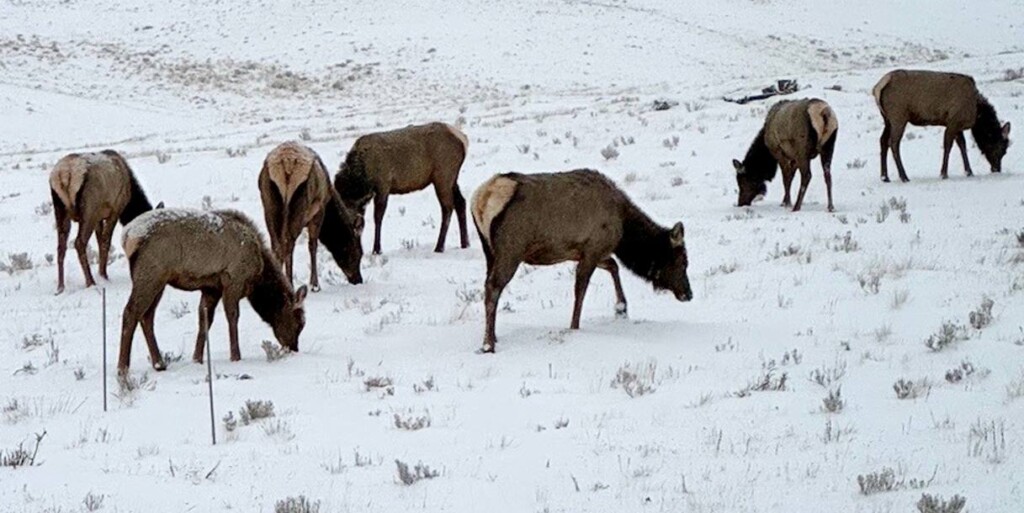 Elk frequently migrate across the property in herds of hundreds – credit, Dave Gottenborg, supplied to Colorado Sun
Elk frequently migrate across the property in herds of hundreds – credit, Dave Gottenborg, supplied to Colorado SunA Colorado rancher has signed a first-of-its-kind agreement that will see a conservation organization help pay for his land leases in exchange for letting wildlife access it.
America is a leader across many dimensions, few more so than in innovative conservation strategies.
From the concept of the ‘national park’ to the Federal duck stamp, America has never been short of good ideas for how to help man and the great nature of North America coexist in harmony.
From the Colorado Sun comes yet another good idea—helping cattle ranchers afford land leases provided they agree to allow migratory elk to pass through their land, even if it means they eat grass and forage the cattle otherwise would.
The reality is that the North American Prairie is home to millions of agriculturalists whose working of the land has disrupted the ancestral wandering of many native species, in particular to this story, elk.
In Colorado, the Property and Environment Research Center (PERC) is paying not more than two-thirds of the cost for land leases that state cattle ranchers sometimes negotiate with private landowners. The Sun reports that such private landowning agriculturalists may live adjacent to a cattleman’s ranch, and it’s easier when winter forage is scarce to pay a little to allow the cattle to roam and forage since nothing is being grown there.
PERC was started during the Cold War to find ways to use markets to incentivize and or commoditize conservation. Though often objected to as an immoral and low-brow way of looking at the natural world, economic science states that it’s impossible for anyone to know the true value of a good or service without the market’s supply and demand functions working in conjunction to determine a price.
Perhaps, the conservationists would say, that’s because there is no value that can be put on a natural ecosystem and the rights of the animals and plants to live there, but that’s mostly an impossible position in the eyes of, for example, a rancher or a congressman fighting for space in a budget. They, like everyone else in society, operate in an economic environment, and need prices to be able to make key spending and saving decisions.
Take Colorado rancher Pete Gottenborg for example, who spends days repairing fences that he needs to keep his cattle from running away that the elk which wander through his 3,000-acre Eagle Rock Ranch property destroy every summer. He’s happy to donate his time repairing fences because he loves the elk, but probably could not afford to allow them to out-graze his cattle if PERC weren’t helping him cover the cost of additional land leases.
HELPING RANCHERS, HELPING NATURE: Bison Ranchers Return Thousands of Animals to Native Lands and Witness Total Rejuvenation of Ecosystem
By paying his lease fees in advance and over a period of years, PERC helps reduce the frustration and anxiety he and other ranchers feel “when 500 elk show up and eat 20 pounds of forage per day, per elk,” he told the Sun.
The Colorado Cattleman’s Agricultural Land Trust helped organize the money from PERC and the lease agreement with Gottenborg’s neighbor, an agreement which the trust says is the first of its kind, but just one method they’ve used to protect 800,000 acres of grazing land for cattlemen and wildlife.
MORE COLORADO NEWS: Colorado Wild Horse Bill Passes With Huge Majority of Politicians Supporting Laws to Protect the State’s Mustangs
As for what else is required of Gottenborg, the only addition is that he lays down his barbed wire fencing every winter so the elk don’t get caught in it. That way they can move through his ranch onto wherever it is they wish to roam.
SHARE This Unique Way Of Helping Restore Ancestral Elk Movements Across The Great Plains…
Source link

